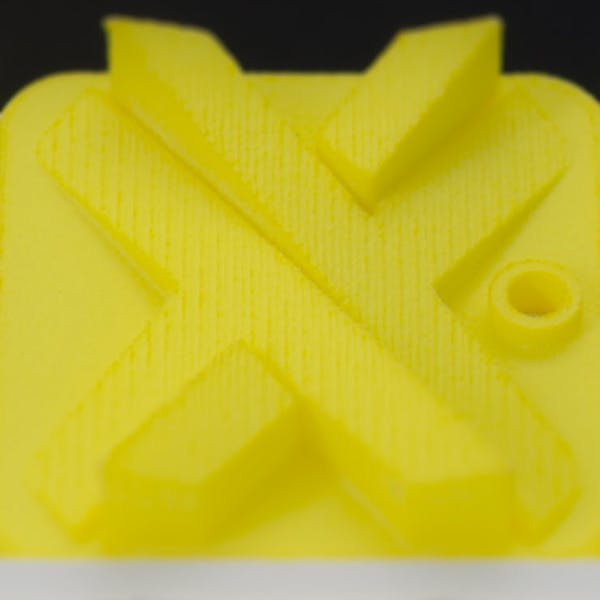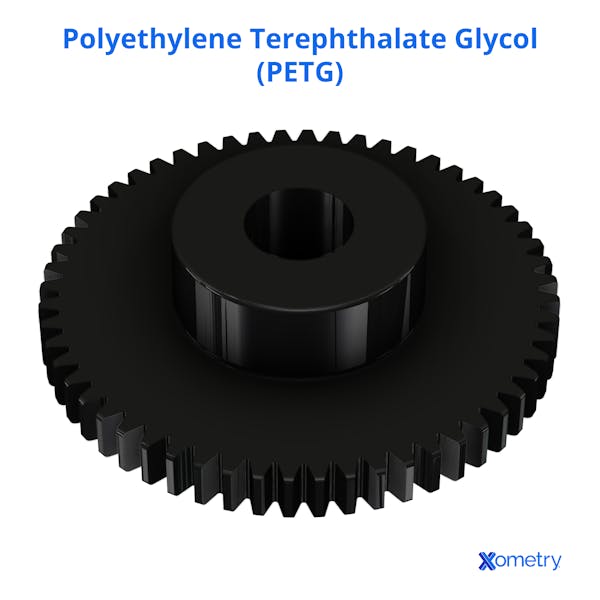Nylon is a family of polyamide polymers, generally of high molecular weights. Nylon can be drawn from a heated mass or extruded through spinnerets to form strands. It is viable in a wide range of sizes, from large monofilaments to the finest fibers. It has huge applications across various sectors specifically as bristles, fabrics, rope, and yarn. Nylon is highly resistant to wear, heat, and chemicals making it an attractive engineering material, though dimensional stability due to water absorption does impose some limits.
Polyester comes from a broad family of polymers. Most references to polyester relate to PET (polyethylene terephthalate). The polyester family includes various naturally occurring chemicals such as cutin, a film that covers the exposed surfaces of most plants. Other polyesters come in the forms of synthetics such as polybutyrate.
Polyester fibers are commonly used in fabric manufacture, either as a sole component (Thermafleece®, for example) or as part of a blend to improve the properties of natural fibers (e.g. polyester cotton). Polyester fibers are highly water-resilient but melt easily. Fortunately, the materials are hard to ignite at normal flame temperatures because they melt instead, and become somewhat self-extinguishing.
Liquid crystal polymers are a recent development, offering enhanced properties because of a modified chemical/crystalline structure. Liquid crystal polyesters were among the first of these. They offer elevated heat tolerance and useful wear properties for seals and bearings. In this article, we will compare nylon vs polyester and highlight their differences in terms of applications, properties, cost, and sustainability.

The Properties of Nylon
Nylon is the commercial name for synthetic thermoplastics in the polyamide family. They are usually manufactured through the reaction of diamines and a dicarboxylic acid. A molecule with carboxylic groups reacts with a molecule that has amine groups at both ends to create polyamide. Alternatively, nylon can be made from a self-condensing amino acid or its lactam. These are identified by ―CONH― groups arranged in a ring. One such amino acid is ε-caprolactam.
Early nylon was developed as a replacement for silk. It can undergo significant elongation before fracture. Nylon resists abrasion, most chemicals, and all organic attacks. It has good thermal and fatigue resistance and is highly machinable. Additionally, it is also a very effective noise dampener.
The four main nylon grades are nylon 66, 11, 12, and 46. These designations are derived from the makeup of their polymeric chains. The diamine's carbon atom count is represented by the first number, and the acid's carbon count is represented by the second. The common material nomenclature is PA, as in polyamide (PA6 or PA6/66 for example).
Nylon is commonly seen in black, white, and natural variants. Nylon 66 is the most common type for engineering applications and the plastic industry. The chemical formula for Nylon 66 is (C12H22N2O2)n.
Toothbrushes, gloves, wheels, guitar strings, tennis racket strings, medical devices, electrical connectors, fishing lines, and more get made out of nylon. For more information, see our guide on nylon.
What Is Polyester?
Polyester is a broad family name for a range of synthetic polymers including poly(butylene terephthalate) (PBT), poly(ethylene terephthalate) (PET), polyethylene terephthalate glycol (PETG), poly(hexamethylene terephthalate) (PHT), and poly(propylene terephthalate) (PPT). These are common engineering polymers with various useful properties. For more information, see our guide on polyester.

Polyester is a family of polymers with an ester group in every block of the main polymer sequence. They are manufactured by condensing functional alcohols and acids to form esters (esterification).
Polyesters exist in various commercial forms, suited to a very wide range of applications:
- Most fiber and molding examples are aliphatic-aromatic polyesters such as PET, PBT, etc. They have high melting points and good tensile strength.
- Various materials consist entirely of aromatic polyesters with extreme heat resilience. For example, polyarylate gets used to make abrading seals in jet engines.
- Hyperbranched polyesters, used as viscosity modifiers in coatings and polymer processing, are generally experimental materials such as Burgath 2000 and Mackey 2000.
- Linear aliphatic high-molecular-weight polymers are easily degraded and make their way into agricultural films and biomedical applications, where implant dispersal is required.
- Polyester resins are thermoset materials that are applied as matrices in composites and as coatings. They’re crosslinked by catalyzation to form chemically stable, tough, and highly adherent films and adhesives.
The Applications for Nylon vs. Polyester
Nylon has wide industrial and consumer uses, including:
- Electrical: As molded insulator components in electrical mains.
- Automotive: Glass-filled nylon 12 can replace aluminum in certain engine parts thanks to its temperature resilience.
- Fabrics: Tights/stockings, rugged upholstery fabrics, webbing/seat belts, umbrellas, parachutes, tents, yarn.
- Monofil: Rope, brush fibers, fishing line.
- Engineering: Bolts, nuts, washers, self-locking components of steel nuts, bearings, gears, high-strength housings and impact guards, rollers, wheels, and plain seals.
- Coatings: Various powder-coating materials are nylon based.
Polyesters have diverse uses, and feature some cross-over with nylon. They’re found in various fields:
- Electrical: Dielectric films in capacitors, isolators on PCBs, insulating tapes, RF shielding, and anti-static applications.
- Additives: To alter resilience and viscosity in coatings.
- Varnish: Thermoset polyester in decorative and robust wood coatings.
- Adhesives: Thermoset forms see use as adhesive resins and matrix materials in composites.
- Automotive: Upholstery fabrics and tire and drive belt fiber reinforcement.
- Fabrics: Thermafleece®-type pile fabrics, compounded with cotton in clothing.
- Food Packaging: Blow molded bottles and thermoforming films (PET).
The Physical Properties of Nylon vs. Polyester
Table 1 lists important properties of nylon and polyester:
| Property | Nylon 6 PA Value (metric) | Polyester PET Value (metric) |
|---|---|---|
Property Optical transmission | Nylon 6 PA
Value (metric) Only when based on cycloaliphatic monomers | Polyester PET
Value (metric) Excellent |
Property Density | Nylon 6 PA
Value (metric) 1.1-1.17 g/cm3 | Polyester PET
Value (metric) 0.7-1.45 g/cm3 |
Property Hardness, Shore D | Nylon 6 PA
Value (metric) 70-85 | Polyester PET
Value (metric) 71-87 |
Property Tensile strength, ultimate | Nylon 6 PA
Value (metric) 50-90 MPa | Polyester PET
Value (metric) 22-95 MPa |
Property Tensile strength, yield | Nylon 6 PA
Value (metric) 40-100 MPa | Polyester PET
Value (metric) 55-260 MPa |
Property Elongation at break | Nylon 6 PA
Value (metric) 5-120% | Polyester PET
Value (metric) 40-600% |
Property Modulus of elasticity | Nylon 6 PA
Value (metric) 1.3-4.2 GPa | Polyester PET
Value (metric) 1.57-5.2 GPa |
Property Flexural yield strength | Nylon 6 PA
Value (metric) 20-150 MPa | Polyester PET
Value (metric) 55-135 MPa |
Property Flexural modulus | Nylon 6 PA
Value (metric) 1.3-3.7 GPa | Polyester PET
Value (metric) 1.38-3.5 GPa |
Property Dielectric constant | Nylon 6 PA
Value (metric) 3.1-12 | Polyester PET
Value (metric) 2.4-3.7 |
Property Melting point | Nylon 6 PA
Value (metric) 190-238 °C | Polyester PET
Value (metric) 200-260 °C |
Property Max service temperature | Nylon 6 PA
Value (metric) 60-180 °C | Polyester PET
Value (metric) 60-225 °C |
Recyclability and Sustainability of Nylon vs. Polyester
Nylons of all types are manufactured from petrochemical source materials. Nylons are not biodegradable and have extremely long endurance in the natural environment, making them a serious pollution problem. Of particular note is the impact of lost fishing nets and ropes on marine mammals. Once the polymer is shredded by environmental pressures, it remains stable as small, micro, and nanoparticles which negatively impact everything from birds to turtles to filter-feeding mollusks.
Nylon on its own is easy to recycle. However, because its widest use is in fabrics and ropes, it can be very hard to identify and separate from other materials like rubber, glass, or other fibers. This renders recycling entirely impractical by current sort/shred/melt/extrude methods.
Polyesters are also manufactured from hydrocarbon-sourced raw materials. They are stable, non-biodegradable, and have long lifespans in the environment. This characteristic, combined with their use in short-life packaging, has made polyesters into a high-volume environmental hazard. They present similar problems to nylons in terms of impacts on fauna, though polyester is far less common in ropes and nets.
Polyester (PET) in packaging films is easy to recycle and is identified by the ♳ mark. It’s important to understand, though, that the glycol-modified form, PETG, must be separated before recycling. PET and PETG polyesters both recycle very easily once sorted, but they’re hard to differentiate. The resulting product in either case is near-virgin second-grade material that has the potential for multiple use/re-melt cycles without significant degradation.
Polyester fabrics in fleece form can also be recycled, but in blends with rubber and other fibers, recycling is impossible.
The Costs Associated with Nylon vs. Polyester
Nylon 6 for molding ranges from $1.80-2.20 per kg, in bulk. The price of nylon 6 fiber, on the other hand, is $2.12-2.50 per kg. The price of virgin polyester (PET) granules for molding is $0.85-2.00 per kg while recycled PET granules cost $0.85-1.10 per kg.
Alternative Materials to Nylon and Polyester
Alternative materials that can take the place of nylon and polyester depend heavily on the type of application. For nylon, options are:
- Fibers: Silk, wool, rayon, polyester, lycra, hemp, bamboo, and cotton.
- Molding: ABS (acrylonitrile butadiene styrene), PET, PBT, PP (polypropylene), POM (acetal), and HDPE (high-density polyethylene)
For polyesters, alternatives are:
- Fibers: Silk, wool, rayon, nylon, lycra, hemp, bamboo, and cotton.
- Films: BOPP (biaxially oriented polypropylene), BOPE (biaxially oriented polyethylene), PVC (polyvinyl chloride), and LDPE (low-density polyethylene)
- Molding: ABS (acrylonitrile butadiene styrene), nylon 6, nylon 66, nylon 11, nylon 12, PP (polypropylene), POM (acetal), and HDPE (high-density polyethylene)
- Bottles: HDPE, LDPE, and PET.
How Xometry Can Help
Xometry provides a wide range of manufacturing capabilities including CNC machining, 3D printing, injection molding, laser cutting, and sheet metal fabrication. Get your instant quote today.
Copyright and Trademark Notices
- Dupont® is a registered trademark of the E.I. DuPont de Nemours Company.
- Thermafleece® is a registered trademark of Second Nature UK Ltd.
Disclaimer
The content appearing on this webpage is for informational purposes only. Xometry makes no representation or warranty of any kind, be it expressed or implied, as to the accuracy, completeness, or validity of the information. Any performance parameters, geometric tolerances, specific design features, quality and types of materials, or processes should not be inferred to represent what will be delivered by third-party suppliers or manufacturers through Xometry’s network. Buyers seeking quotes for parts are responsible for defining the specific requirements for those parts. Please refer to our terms and conditions for more information.


